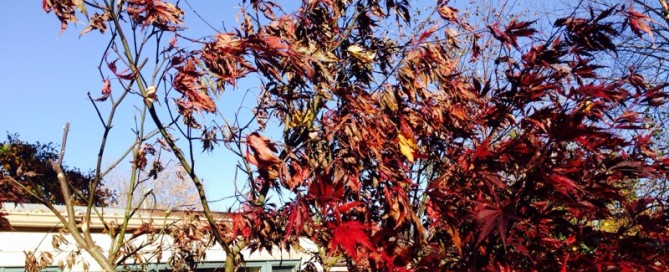Japanese Maple Winter Damage
Freeze damage appears on Japanese maples as a shriveling and browning or blackening of foliage. Leaves may eventually drop from the tree and branch dieback can also occur. Major branch dieback leaves remaining branches and the trunk exposed to greater sunlight, leaving them vulnerable to sunscald and creating injured bark areas that certain pests and fungal pathogens can penetrate. Generally, a freeze-damaged Japanese maple will begin to produce new growth from surviving branches within a few weeks of spring, though this new growth is often weak and spindly. Injured portions are cut back to larger branches or the main stem so that no stubs are created. A freeze-damaged Japanese maple will generally produce excessive, weak and often upright new shoots giving the plant an unattractive, crowded appearance. All of this new growth is not trimmed off at once. During the first growing season following damage, only shoots growing completely vertically or toward the center of the tree are pruned out. The following year, about 30 percent of the remaining growth is removed. It may take three to five years to restore a freeze-damaged Japanese maple to its desired form.
